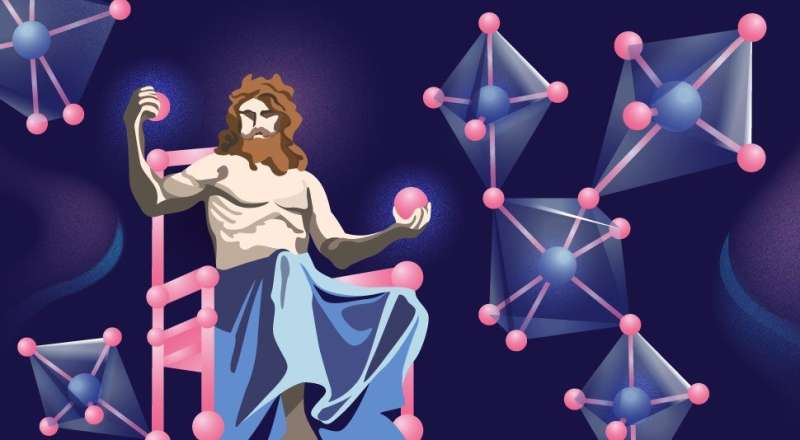Small but self-imposing: Titanium alters behavior of host lattice atoms

Researchers from MIPT and their colleagues from Ural Federal University have combined optical and acoustic approaches and found that incorporating titanium atoms into barium hexaferrite leads to an unexpected substructure forming in the crystal lattice. The resulting material is promising for ultrafast computer memory applications. The findings were published in Scientific Reports.
A multiferroic is a material characterized by more than one type of internal ordering. For example, it might exhibit both ferroelectric and ferromagnetic properties, depending on temperature. This means the material undergoes spontaneous polarization in a certain temperature range, and below another critical temperature, it becomes magnetized even in the absence of an external magnetic field.
Researchers study the fundamental properties of multiferroics to create materials with desired characteristics that can be altered in a controlled manner. Multiferroics are applicable in ultrafast magnetic memory devices, anti-reflective coatings, and fast data transmission at terahertz frequencies—that is, within trillionths of a second.
The researchers fused optical and acoustic approaches in an experiment to investigate the properties of titanium-doped barium hexaferrite. The study combined terahertz spectroscopy with the analysis of ultrasound wave attenuation and velocity, revealing an unusual behavior of the material.
"Optics and acoustics are like vision and hearing in that they complement rather than repeat each other. The two channels together provide a more complete understanding of an object," said Liudmila Alyabyeva, who supervises multiferroics research at MIPT's Terahertz Spectroscopy Lab. "Whenever two very different experimental techniques demonstrate certain phenomena occur at a particular temperature, that is a strong indication that something's happening in the sample at the microscopic level. So we need to identify the mechanism behind those effects."
The scientists found a way to explain both the unusual optical properties of the material and the acoustic ones. It turned out that by incorporating titanium in barium hexaferrite, the iron sublattice in the material is affected. The presence of the foreign atoms causes some of the iron atoms to change their oxidation state and form what is known as the Jahn-Teller sublattice—a secondary structure within the crystal lattice of the material.
When foreign atoms are inserted into the lattice of a crystal, they replace some of the host atoms. In the case of barium hexaferrite, titanium substitutes for some of the iron. However, what makes the two elements different is that iron has a valence of three in hexaferrite, and titanium is quadrivalent. This means the ions of these two metals in the crystal differ in their size and electric charge.
"When a trivalent iron ion gets replaced by the smaller quadrivalent titanium ion, this distorts the lattice and violates electrical neutrality. But the electrical neutrality has to persist somehow, it's a fundamental rule," explained Boris Gorshunov, who heads the Terahertz Spectroscopy Lab at MIPT. "As a result some of the neighboring iron atoms become divalent to offset the charge of the titanium ions." These structural changes are the reason of the material's unusual optical and acoustic properties observed by the team.
"Our study is the first to highlight a new mechanism that gives rise to a sublattice of Jahn-Teller centers. Rather than being formed by impurity atoms, as is normally the case, the sublattice consists of some of the host crystal atoms," said Ural Federal University Professor Vladimir Gudkov.
The emergence of the Jahn-Teller sublattice in the crystal leads to unusual and potentially valuable properties. For instance, the magnetic subsystems that arise in the material can be used in ultrafast computer memory, remagnetized by terahertz radiation, also known as T-waves.
More information: V. V. Gudkov et al. Sub-lattice of Jahn-Teller centers in hexaferrite crystal, Scientific Reports (2020). DOI: 10.1038/s41598-020-63915-7
Journal information: Scientific Reports
Provided by Moscow Institute of Physics and Technology





















